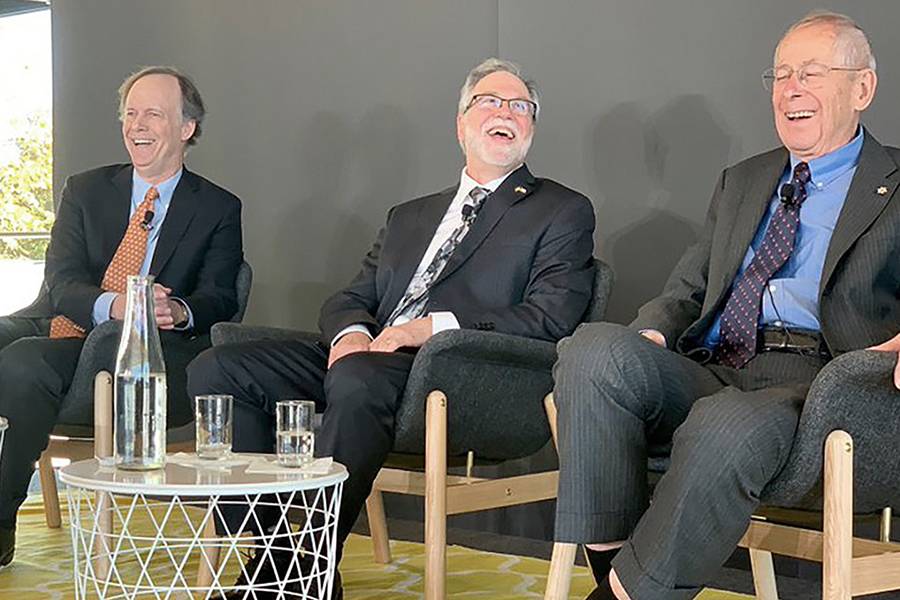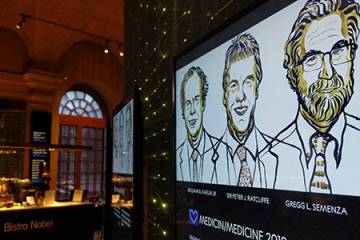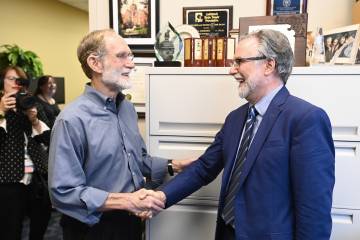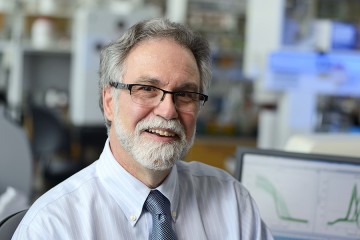Gregg Semenza has devoted decades to learning how cells control oxygen levels. His research has led to the development of potential treatments for cancer and cardiovascular diseases—and now the 2019 Nobel Prize in Physiology or Medicine.
"I tell people if you have a job that takes advantage of what you're good at, makes you happy and you get paid for it, you're golden. If you can improve people's health while you're at it, that's even better," says Semenza, a professor and director of the Vascular Program at the Institute for Cell Engineering at the Johns Hopkins University School of Medicine.
And winning the Nobel is better still, because it allows him to be an ambassador for basic science research.
Semenza says he's had "a permanent smile on my face" since Oct. 7—the day he learned he had won. Since then, there's been a whirlwind of interviews that give him opportunities to praise basic science research and offer his thoughts for inspiring future generations.
On Nov. 13, he spoke at a symposium for American 2019 Nobel laureates, held at the Swedish Embassy in Washington, D.C.
"Science is really exciting," he said there. "The sooner children are exposed to it the better."
Communities must support teachers, from elementary school on up, says Semenza, who frequently credits Rose Nelson, his high school biology teacher in Tarrytown, New York, with nurturing his love of science.
For the symposium, Semenza joined William Kaelin Jr., who trained in internal medicine and oncology at Johns Hopkins and is now a professor at Harvard Medical School and investigator with the Howard Hughes Medical Institute, and James Peebles, a Princeton physicist whose work on the evolution of the universe earned him the Nobel Prize in Physics. Semenza shares his prize with Kaelin and with Peter Ratcliffe of Oxford University.
The annual event is open to all American Nobel laureates in a given year; there were eight in 2019. Attendees included Swedish ambassador to the U.S. Karin Olofsdotter and National Academy of Sciences President Marcia McNutt.
The symposium, which attracted about 200 people, was held in a sunny room overlooking a sparkling Potomac River. The mood was jovial as the three Nobel winners briefly explained their work and answered questions about their investigations and the future of basic science research.
"I don't think it's an accident that this year's medicine prize is shared by physician-scientists—an endangered species," said Kaelin. "As physician-scientists, we knew that many diseases are linked to abnormalities in oxygen delivery. We knew if we understood that, it would immediately have applications."
Semenza, who has been at Johns Hopkins since 1986, said explaining his research in easy-to-understand terms is part of his job as an educator and now a Nobel laureate.
He started his talk by telling audience members to hold their breath. "Oxygen is the thing you can do without for the least amount of time," he said, adding that all 100 trillion cells in the human body need oxygen to make energy.
"We studied the mechanism that makes sure every cell has the right level of oxygen," he explained. Because of his work, that mechanism, known as HIF-1, can now be manipulated, making it possible to deprive cancer cells of oxygen or give more oxygen to cells that are oxygen-starved because of cardiovascular disease or other illnesses.
"Being trained both in basic research and clinical medicine, my goal has always been to connect the dots, to go from the basic molecular fundamentals to the clinical applications," he said. "The ability to connect those dots has been the most satisfying to me. I'm very fortunate."
Gregg Semenza travels to Stockholm later this week to accept his Nobel Prize, and we'll take you along for the journey, from his arrival in Sweden to his Nobel lecture at the Karolinska Institutet to the grand Nobel Award Ceremony and Banquet on Dec. 10. Read the Hub and follow @HopkinsMedicine on Twitter, Facebook, and Instagram for coverage and updates.
This article originally appeared in The Dome.
Posted in Science+Technology











